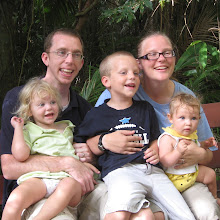January 3rd (that's tomorrow, people!) is the peak of the annual Quadrantids meteor shower. The estimated best time for viewing is 12:50 UT (7:50 EST, 4:50 PST) but of course you'll see plenty before and after. Best viewing is after midnight, doubly this year because of the moon.
Why do we have meteor showers? Meteor showers are caused by Earth moving through the debris left behind by a comet. As comets orbit the sun, they leave bits of dust behind. Since that dust stays in a (mostly) stationary spot in our orbit, we know we'll run into that patch at the same time each year.
Most meteor showers are known by the name of the constellation nearest the center (or "radiant") of the shower. The Geminids, for example have their radiant in the constellation Gemini. Interestingly, the Quandrantids were named for a now defunct constellation name, Quadrans Muralis. That constellation was near what we call the Big Dipper, so look in the north toward the Big Dipper for the radiant.
If you're going to try to see the shower, wait at least until moonset (just past midnight here in South Florida) and then look outside. No telescope necessary; some people mistakenly think they'll see more meteors with a telescope. In fact, it's just the opposite: you want to see as much of the sky as possible in order to see all meteors in your view. If you use a telescope, you'll see only a tiny part of the sky. To see more of the sky, find a nice clear spot (no buildings, lights or tall trees), lie down on a comfy sleeping bag and enjoy!
If you can't make it out on the 3rd (or if weather doesn't permit), don't worry; meteor showers last days or sometimes weeks. Just keep your eyes open when you're outside at night for the next week or two and you'll probably see a meteor or two.
Happy meteor hunting!
Friday, January 2, 2009
Subscribe to:
Post Comments (Atom)




No comments:
Post a Comment